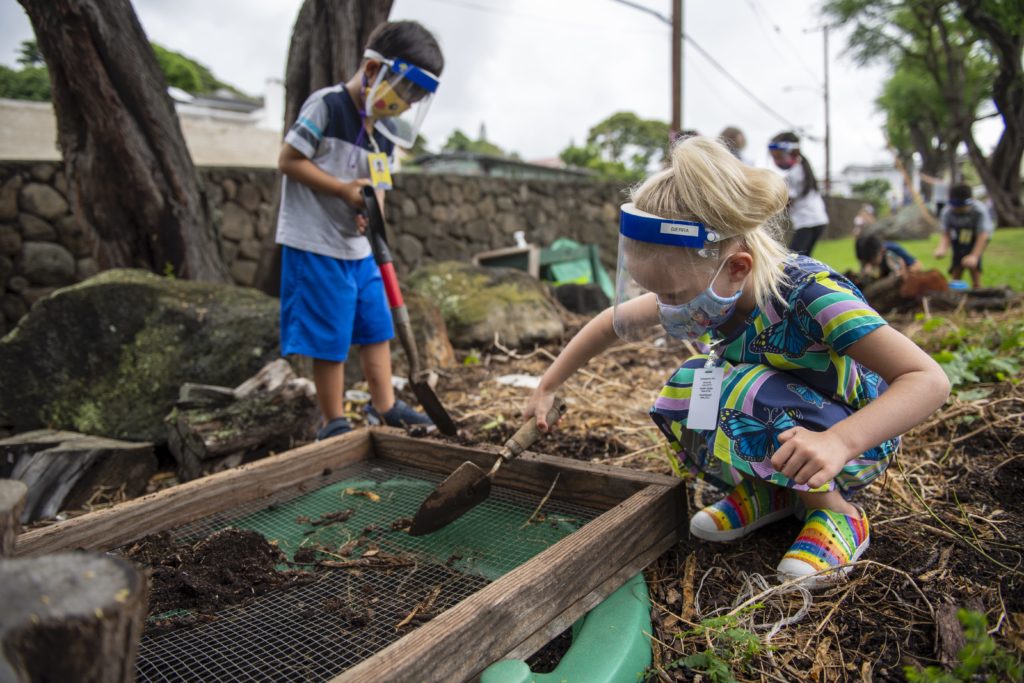Eliza Leineweber ’92 Lathrop, Punahou’s garden resource teacher, shares how the School’s gardens are flourishing with the help of kindergartners.

I think the thing the kids love most about gardening is seeing the impact they have on their environment, especially in the recursive way our lessons are designed. I take time to review what we did in the last lesson and show them what has happened with those seeds and plants. Showing the students the impact of their work is meaningful at any age, but so important to establish with these learners.
– Eliza Leineweber ’92 Lathrop

In this lesson, we focused on establishing habitats for our pollinators that share the garden with us, and how to prepare pots and plant seeds.
With COVID safety protocols in place, we have redesigned garden classes with smaller groups, meeting just half a class (12 students) at a time to allow for fewer students working in each group, and less crowding in our shared projects. The students still love to collaborate and interact, and the smaller groups allow them to do that safely.

We planted seeds of different sizes to reinforce the lesson that a seed is planted twice as deep as the seed is big. In this lesson students are planting their seeds for host and nectar plants in seed trays, and the next time we met we learned about direct sowing, planting beet seeds in rows in our garden plots, and following up with the seeds they started here with a lesson on transplanting. Those little seeds are now blooming nasturtium and borage, and the students are getting to see how the plants are doing their work to attract bees and cabbage white butterflies to our garden.

The kids work with the screen to make compost, which is one of the activities they can decide to explore during Independent Work Time. It is one of a handful of ongoing activities we have available each garden visit. The students learn to work in a variety of different environments this way, and explore a variety of challenges as they develop their skills, learning to use tools safely, identify habitats of various bugs, handle organisms appropriately, and work together with classmates to get a big job done.
With COVID safety protocols, they have also had to develop patience because we have limits as to how many students can work in any given area, so if all the spots are taken, students have to adjust and try something new – perhaps one of the most valuable lessons!
